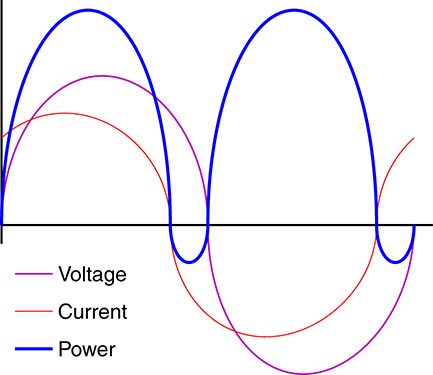However, "concise" is not in my nature. :wink:
I wasn't paying attention to this discussion because Charlie's answer was so "concise" that I never made it all the way through. :grin::grin: However, now that you have my attention, I will weigh in on a few topics.
Actually I believe charlie b is right.
V = (kg*m^2) / (C*s^2)
A = C / s
V*A = (kg*m^2) / (s^3) = (kg*m^2) / (s^2) * (1/s) = J / s
Charlie is in fact correct. The units are and will always be joules per second. The reason why some posters here are getting this confused is because they are so accustomed to looking at secondary equations that have been simplified that they forget where all of this originates.
Must argue with the whistle blower.
The key to this discussion I think is that one VA "appears" to be one joule/sec, but it is not. For example, if the phase angle is 30 deg. and the apparent power is 1 VA, 0.866 joules/sec are transferred to the load while 0.5 joules/sec flow back and forth in the reactive portion of the load.
A Joule is the amount of energy required to move one coulomb of charge through 1 volt of potential difference. Even when the instantaneous power dips below the negative axis, work is still being performed, but it is going in the opposite direction. Work is always being performed throughout the cycle, but when examined over time, this small portion of negative work cancels out a portion of the positive work. This cancellation of the two over the time period is what makes it
"Appear" that no net work has been performed for a portion of the cycle. It doesn't mean that there was no work during these time segments, only that from the time perspective that there was no net work.
It is also incorrect to state that this apparent j/s energy is simply bouncing around the reactive part of the load doing nothing. It only appears to be doing nothing when you look at the overall net result.
You are missing the point that a true vector--not a phasor--is a complex number expressing magnitude and direction, e.g., an electric field or magnetic field. Power has no directional angle, therefore it cannot be a vector.
You are confusing a "tool for the simplification of a problem" as being an absolute. Current and voltage are not vectors or phasors or even complex numbers. These are simply tools that we use to help us resolve complex problems. A vector is not a complex number, but we choose to represent it as a complex number to make it easier to solve vector analysis with simple equations. Moreover, a phasor is just another form for representing a vector.
Power is not sinusoidal and does not carry a phase angle, therefore it cannot be a phasor either.
Wrong. Power is sinusoidal. Just because it has a bias does not mean it is not sinusoidal. I think this has already been address by others.
You are also wrong about the phase angle. Because you assumed power was not sinusoidal, you failed to notice that its period is time-shifted from the baseline (in my example, the voltage sinusoid is what determined the baseline--v(t)=Vsin(wt)). I am not going to bother going through the math to find the exact phase shift, but from the graph you can see that the power is phase-shifted by approximately the same (but opposite) as the current's phase shift. Don't confuse the zero-crossing of the power function with its period origin.
Please note that my example is for sin^2(wt) which cannot have a negative value. The point is that there are no negative lobes, therefore the expression for power cannot be a sine wave, i.e., sinusoidal.
It is always amusing how quickly you can backpeddal. Considering that this thread is titled "VA vs Watts" it was not much of a stretch to assume you were speaking in the general sense.
Note also that the lobes of sin^2(wt) are sharper than those of sin(wt).
No, if you are referring to my previous drawing, that is actually my mistake in my original graph, which I drew many, many years ago without actually plotting the functions. So today I plotted the actual functions from Excel.
In this more accurate representation you can clearly see that the power function is a smooth sinusoid with a positive bias and a phase shift to the right. The period of the power function is 1/2 that of the current and voltage functions, but within the functions own period, the lobes are the same, and if follows the path of a standard sinusoidal function. The reason why I displayed the graph starting with negative time values was to make it easier to see how the power's sinusoid was shifted to the right.


